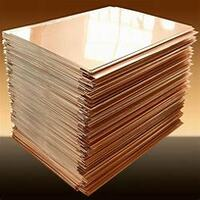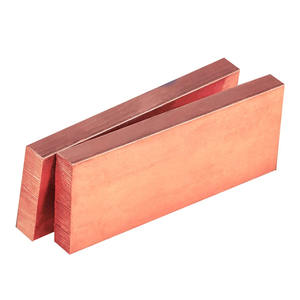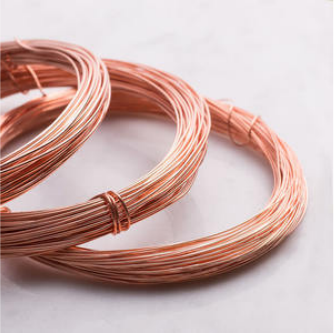1. Introduction
Stripping copper wire for scrap is a common practice among DIY recyclers, electricians, and metal scrappers. Clean, bare copper fetches a much higher price than insulated wire—sometimes double or more. But doing it wrong can waste time, damage the copper, or even pose safety risks.

In this guide, you’ll learn the best way to strip copper wire safely and efficiently. We’ll cover tools, techniques, and what to avoid—like burning copper wire for scrap, which releases toxic fumes and degrades metal quality. Whether you’re stripping wire for recycling, salvaging from old appliances, or prepping copper strip wire for resale, these steps will help you get the job done right.
2. Why Strip Copper Wire?
Recyclers pay top dollar for bare bright copper—clean, unalloyed, and free of insulation. Insulated wire is often downgraded or rejected, especially if it contains mixed metals or plastic coatings.
Stripping wire also helps you sort copper types accurately: solid vs. stranded, thick vs. thin, or even identifying valuable copper alloy strip like beryllium copper strip or nickel plated copper strip. Plus, clean copper is easier to bundle, store, and transport.
3. Tools You’ll Need
- Wire stripper (manual or automatic)
- Utility knife (for thick cables)
- Heat gun (optional, for stubborn insulation)
- Safety gloves and goggles
- Bucket or bin for sorted copper
Avoid using pliers alone—they can nick or stretch the copper, reducing its value. And never use open flames to burn insulation off; burning copper wire for scrap is illegal in many areas and harms both your health and the environment.
4. Step-by-Step: How to Strip Copper Wire Safely

4.1. Sort Your Wire First
Separate wires by type: THHN, Romex, coaxial, or motor windings. Some contain aluminum or steel cores—these aren’t pure copper and should be set aside. Focus on solid or stranded copper conductors with plastic or rubber insulation.
4.2. Choose the Right Stripping Method
For thin wires (like 14–22 AWG), a manual wire stripper works perfectly. Just clamp, twist, and pull the insulation off.
For thick copper cable (like 6 AWG or larger), use a cable ripper or utility knife to carefully score the outer jacket without cutting the inner conductors. Then peel back the insulation and strip each inner wire individually.
If you’re dealing with long runs of wire, consider an automatic wire stripper—it’s a fast way to strip copper wire in bulk and worth the investment if you scrap regularly.
4.3. Avoid Common Mistakes
Don’t yank insulation off forcefully—it can break the copper strands, especially in flexible copper wire. Don’t use sandpaper or grinders; they remove copper and leave residue.

And again: never burn insulation off. Burning copper wire for scrap releases dioxins and ruins the metal’s surface, lowering its scrap value and possibly violating local laws.
5. What to Do With Stripped Copper
Once stripped, bundle your copper by type: bare bright, #1 copper (clean but slightly oxidized), or #2 (tarnished or mixed). Clean it with a dry cloth if needed—no water or chemicals.
You can also flatten or roll thin copper strips into a copper strip roll for easier handling. If you have flat copper strip or copper metal strips from electronics, keep them separate—they may qualify as specialty scrap like 1mm copper strip or copper beryllium strip.
6. Where to Sell or Recycle
Search for ‘copper strip near me’ or ‘copper bars for sale’ to find local scrapyards or metal buyers. Call ahead to confirm their accepted types and current copper rod price or copper strip price.
Some recyclers also accept copper bonded ground rod or copper clad steel earth rod—though these are lower-value due to their steel core. Pure copper items like copper round bar, copper bus bar, or copper ingot fetch the best rates.
7. Bonus: Repurposing Copper
Not all stripped copper needs to go to scrap. Thin copper strips can be used for crafts, grounding, or even as copper tape for snails in gardens. Flat copper strip is great for DIY electrical projects or making custom copper strip wire.
Leftover pieces? Consider melting them into copper bars—but only if you have proper foundry equipment. Is it worth melting copper into bars? Only if you’re processing large volumes; otherwise, selling as-is is simpler and safer.
8. Conclusion
Stripping copper wire for scrap doesn’t have to be tedious or dangerous. With the right tools and techniques, you can quickly turn insulated cables into high-value bare copper—whether it’s for recycling, resale, or reuse. Stick to safe, mechanical methods, avoid burning, and always sort your copper carefully to maximize returns.
Remember: the best way to strip copper cable is the one that preserves the metal’s integrity while saving you time. Happy scrapping!
Our Website founded on October 17, 2012, is a high-tech enterprise committed to the research and development, production, processing, sales and technical services of ceramic relative materials such as How. Our products includes but not limited to Boron Carbide Ceramic Products, Boron Nitride Ceramic Products, Silicon Carbide Ceramic Products, Silicon Nitride Ceramic Products, Zirconium Dioxide Ceramic Products, etc. If you are interested, please feel free to contact us.

